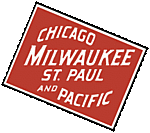Spitfire Mk VI Propeller: Rotol 4 blade constant speed, variable pitch, Jablo type R2/4F5/1 (Jablo) or R2/4F5/2 (Dural) 10ft 9ins dia
Spitfire Mk VII Propeller: Rotol 4 blade constant speed, variable pitch, Hydrulignum
Spitfire MK VIIIPropeller: Rotol 4 blade constant speed, variable pitch type R3/4F5/2 (Dural) or R3/4F5/3 (Dural) or R5/4F5/4 (Jablo or Hydrulignum) (Merlin61 or Type R12/4F5/4 (Jablo or hydrulignum) (Merlin 63 / 63A) 10ft 9ins dia.
Spitfire LMFK VIII Propeller: Rotol 4 blade constant speed, variable pitch type R12/4F5/4 (Jablo or Hydrulignum) 10ft 9ins dia.
Spitfire HMFK VIII Propeller: Rotol 4 blade constant speed, variable pitch type R12/4F5/4 (Jablo or Hydrulignum) 10ft 9ins dia.
Spitfire Mk IXb Propeller: Rotol 4 blade constant speed, variable pitch type R3/4F5/2 (Dural) or R3/4F5/3 (Dural) or R5/4F5/4 (Jablo or Hydrulignum) or Type R12/4F5/4 (Jablo or hydrulignum) all 10ft 9ins dia.
Spitfire MK IXc Propeller: Rotol 4 blade constant speed, variable pitch type R3/4F5/2 (Dural) or R3/4F5/3 (Dural) or R5/4F5/4 (Jablo or Hydrulignum) or Type R12/4F5/4 (Jablo or hydrulignum) all 10ft 9ins dia..
Spitfire Mk IXe Propeller: Rotol 4 blade constant speed, variable pitch type R3/4F5/2 (Dural) or R3/4F5/3 (Dural) or R5/4F5/4 (Jablo or Hydrulignum) or Type R12/4F5/4 (Jablo or hydrulignum) all 10ft 9ins dia..
Spitfire LFMk IXb Propeller: Rotol 4 blade constant speed, variable pitch type R12/4F5/4 (Jablo or hydrulignum) 10ft 9ins dia.
Spitfire HFMk IXc Propeller: Rotol 4 blade constant speed, variable pitch type R12/4F5/4 (Jablo or hydrulignum) 10ft 9ins dia
Spitfire HFMk IXe Propeller: Rotol 4 blade constant speed, variable pitch type R12/4F5/4 (Jablo or hydrulignum) 10ft 9ins dia.
Spitfire LFMk XVIcPropeller: Rotol 4 blade constant speed, variable pitch hydrulignum.
Spitfire LFMK XVIePropeller: Rotol 4 blade constant speed, variable pitch hydrulignum.
Hope that some of this will help you Carlos.....































